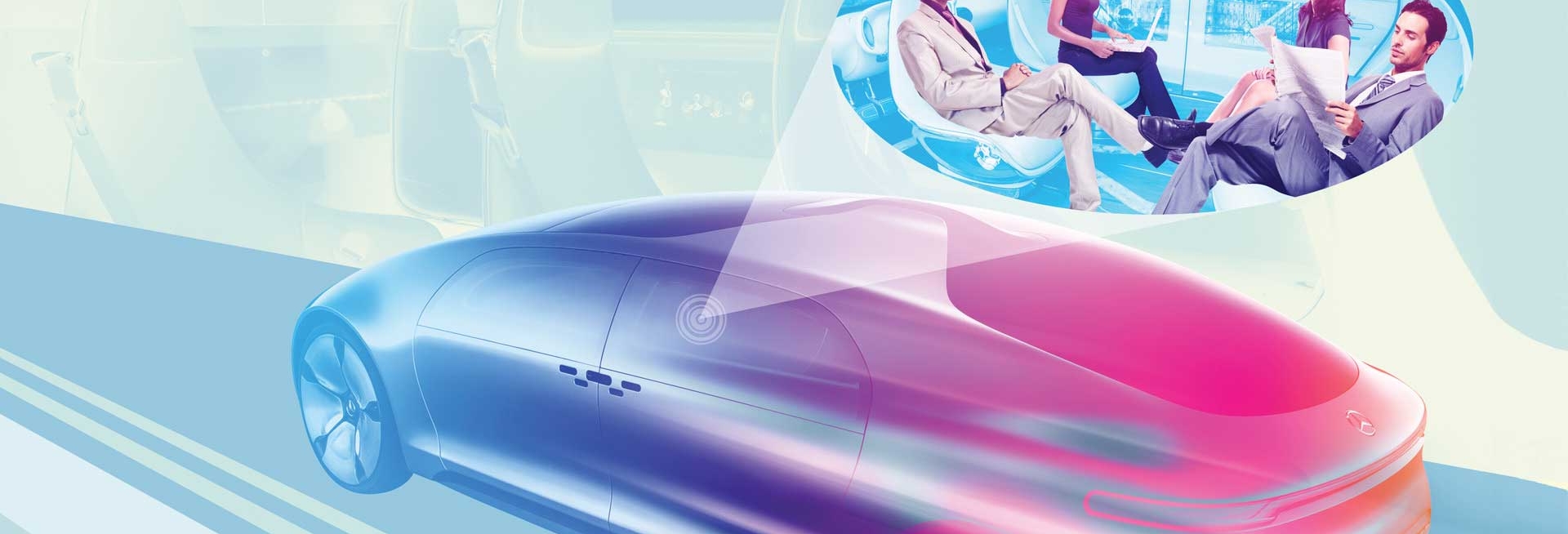by Mike Monticello, for Consumer Reports, March 2016. Original article in its entirety located here.
Teresa Favuzzi is a good driver; it’s everyone else around her who is a maniac. Favuzzi’s partner is legally blind, so the 54-year-old independent-living director from Sacramento, Calif., is used to taking the wheel of the family car. She makes full stops at stop signs, obeys speed limits (mostly), and always looks both ways before entering an intersection. The responsibility of being the driver appeals to her, because then she generally knows what the outcome of her journey will be: a safe arrival at her destination.
She doesn’t give up the wheel easily—“I’m a bit of a control freak,” she says—but in May 2015, Favuzzi eagerly accepted an invitation to take a test ride in Google’s prototype self-driving car on a parking garage rooftop of the software giant’s Silicon Valley headquarters. Google has held several demonstration events for journalists and community organizations so that they can learn about, and experience firsthand, Google’s self-driving technology.
The inside of Google’s podlike vehicle is at once familiar and disconcerting. It has two forward-facing seats, seat belts, even cup holders. But there is no steering wheel, brake pedal, or any controls to speak of, save for a “go” button and a big, red emergency “stop” button. Engaging the go button is a leap of faith for any “driver.” After that push, for the length of your journey you are at the mercy of a machine.
But as Favuzzi discovered, it’s a cautious machine, maybe even more cautious than she is. The vehicle stopped for pedestrians, bicyclists, other cars, and obstacles in the road “almost as well” as she could have driven. The car was calm, courteous, patient . . . careful to a fault, even. Favuzzi got used to the experience in a hurry, and never once had that panicked-passenger feeling. You know the one, where you smash your foot into the car’s firewall, slamming on an imaginary brake pedal.
Instead, she got out feeling . . . relaxed. She’s now eagerly anticipating a day when she can have a self-driving car of her own, one where she and her partner can chill out, chat, sit back, and enjoy the ride.
But she’ll have to wait a while. The prototype (which still doesn’t have an official name) that shuttled Favuzzi is Google’s vision of the future, a world of cars that use lasers, radar, and cameras—and a significant amount of computer processing power—to “see” the road, and thus remove humans from the task of driving.
It’s a compelling scenario: No texting drivers wandering into adjacent lanes. No aggressive road ragers cutting each other off. No tired, drunk, or just plain confused people in control of 2-ton vehicles. Just computers constantly analyzing the road and traffic conditions, always alert and making the safest, most logical decisions every time.
The fact that Google’s vehicle works at all makes that vision seem tantalizingly within reach. And in some ways it is. Researchers at Google, as well as universities including Carnegie Mellon and Stanford, plus multiple car manufacturers, are working diligently on the technologies necessary to let cars drive themselves. Experts predict that we’ll see some real-world deployments of self-driving car services in select cities within the next few years. Also, many systems are available in cars right now that allow varying degrees of autonomy. Some production cars can even operate on their own for limited durations under specific circumstances.
But it’s a leap of surprising complexity to go from a few sporadic implementations of self-driving technology to a get-in-the-backseat-and-take-a-nap world of robotic cars. In fact, many of the engineers and automotive executives we contacted can’t even agree about a realistic time frame, or what will be necessary in terms of laws and standards. But most do agree that it will take decades to sort it all out and spread full-autopilot technology into dealerships countrywide.
Google Inside?
Chris Urmson, the director of Google’s Self-Driving Car Project, is on the optimistic end of the spectrum. “My team here is working to make sure my 12-year-old son doesn’t have to get a driver’s license,” he says, “and we believe that.”
Google isn’t looking to become a car manufacturer, though. Rather, the online-search company wants its software to be the electronic brains of cars built by established automakers.
Many of those automakers are urging patience. Matt Sloustcher, who handles advanced technology communications for Honda, said his company doesn’t have a set date for when “ubiquitous, unmanned operation” will be achievable, but it won’t be anytime soon. “There are many complexities involved from a regulatory, liability, and infrastructural standpoint that are only just starting to be explored.”
How that all rolls out is no small matter. If the move to self-driving vehicles is inevitable, then it will be the single biggest change in the relationship between cars and their passengers since the invention of the motor vehicle itself.
We are talking about letting computers make life-and-death decisions on our behalf, on a mass-scale. Whether it takes two years or 20, it is a transition that requires everybody understanding the basics of self-driving vehicles, and setting realistic expectations about what we can expect from the technology.
Consumer Reports has experienced some of the most advanced features currently on the market at our track in Connecticut, and we’ve also talked with scientists and engineers who are developing the next generation of self-driving technology.
Our goal has been to answer questions about what’s possible, how safe it all will be, and when Teresa Favuzzi—and the rest of us—can realistically expect our cars to take the wheel.
Read the complete article by clicking here.





